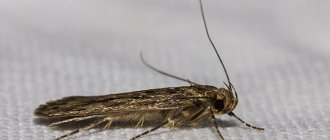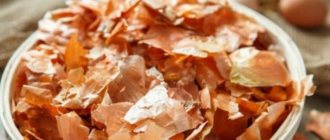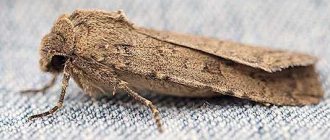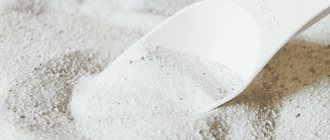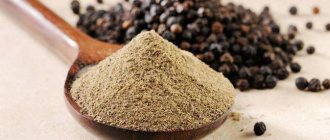A moth is a small gray butterfly that settles in a person’s home and causes a lot of trouble. Its voracious larvae eat items made of fur, wool, felt, felt, natural fabrics, and spoil book spines and food products. To avoid such troubles, you need to know what moths are afraid of and how to quickly get rid of them.
Every housewife should know what moths look like, since their larvae cause a lot of harm.
Lavender
This is an evergreen, heat-loving shrub with soft purple inflorescences, which is considered to be native to the Mediterranean. Moth lavender blooms in the height of summer and has a very strong and pleasant aroma that lingers in both fresh and dried stems and leaves. That is why freshly cut shoots and pharmaceutical preparations are used to repel moths.
How to use lavender for moths? It can be applied in several ways:
- Prepare a decoction for wet cleaning;
- Crush crushed and dried grass in the corners;
- The collection is poured into fabric bags and hung indoors.
Newspapers
Moths cannot stand the smell of printing ink. Our grandmothers covered the shelves of cupboards and wardrobes with newspapers. To protect your favorite fur coat from damage, you can remember the old folk method and put several crumpled newspapers in a case with outerwear.
To achieve the greatest effect, the press must be fresh. When storing winter boots in your closet, stuff your boots and boots tightly with crumpled up newspaper. In this way, two problems are solved: the shoes retain their shape, and moths will never appear in them.
Ledum
This plant with soft white flowers can be found in forests and fields. It blooms almost the entire season. Ledum is often used in the fight against domestic insects, including moths. The main thing is not to overdo it - the strong aroma of this shrub can cause dizziness and nausea. To create bouquets, 2-3 branches are enough - moths will hear the smell, but for humans it will remain invisible.
Rose rosemary is an excellent moth repellent, however, you should be careful, as the plant is poisonous
Advice! Ledum is a poisonous plant, so you must be careful when collecting it yourself.
Lemon Balm
Melissa is another herb that has medicinal properties and a scent that repels moths. The plant is often called lemon balm because of its characteristic scent. Melissa bushes are very decorative, have faceted, branched stems covered with heart-shaped, serrated leaves. The flowers are inconspicuous and small.
Characteristic
Melissa grows well in a pot, provided the right variety is chosen. The variety is selected not only by appearance, but also based on its purpose.
Several compact varieties are suitable for indoor cultivation:
| Lemon tea | The plant emits a special citrus smell. An aromatic, tonic tea is prepared from its leaves. |
| Pure gold | Decorative hybrid with beautiful flowering. The first inflorescences are white, the last ones are blue. |
| Mojito | It has a pronounced smell and spicy taste. The variety is used in cooking and is often grown right in the kitchen. |
| Lemon scent | Compact plant for universal use. It can be grown at home, taken into the garden or planted outdoors. |
Melissa has a very subtle, refreshing aroma. There are no moths in a room where lemon balm grows. In closets and adjacent rooms, stems with leaves are used to protect against insects. Parts of the plant that are dried out in air lose their aroma, so they should be replaced occasionally.
Features of planting and care
Melissa tolerates indoor cultivation well; it can be taken out to the balcony or terrace in the warm season. Delicate leaves cannot tolerate direct sunlight. Water the crop moderately; in hot weather, spray the leaves.
Melissa flowers usually have no decorative value and lead to thinning of the shoots. To preserve the decorative appearance and aroma of the leaves, it is recommended to remove lemon balm flower stalks immediately after they appear.
Tansy
Unlike lavender, tansy is very common in our area. It grows in fields, vacant lots, and near roads. Its bright yellow inflorescences, popularly called “wild rowan”, can be seen even among the urban jungle!
Tansy is considered a medicinal plant - anthelmintic compounds are often prepared from it, but it also helps against indoor moths. Moreover, tansy collection is considered the most powerful insect repellent! Using tansy is simple - place dry sprigs of the herb or its powder in the closet (you can buy it at the pharmacy or prepare it yourself). After some time, the insects will disappear.
Tips to help get rid of moths forever:
Oregano
A well-known medicinal plant among culinary specialists goes by different names depending on the variety: oregano, marjoram, wild mint. Popular names for common herbs are oregano, motherwort, incense. The perennial gray-green grass grows no higher than 50 cm, its stems are densely covered with ovate leaves with fine serrations along the edges. Small flowers are collected in wide, corymbose panicles.
Characteristic
The seasoning has a specific, spicy smell, for which it is popularly called flea grass and bug grass. The plant has long been used to repel small household pests, moths, mosquitoes, and bedbugs.
Special oregano hybrids have been created for home breeding:
- White oregano is a high-yielding variety with rapid growth of greenery;
- Arbatskaya Semko is a tall bush that requires a large container for planting;
- Fragrant bunch - a variety no more than 30 cm in height with a strong odor;
Honey aroma is a particularly fragrant variety of homemade oregano, when in bloom the scent spreads 3 m around the bush.
Oregano repels moths when fresh and does not lose this property when dried. To get rid of butterflies, you can use store-bought oregano seasoning or oregano herb. It is enough to pour the crushed raw materials into fabric bags and leave them in the closet.
Features of planting and care
Wild oregano can survive cold winters by regrowing in the spring. Domestic varieties are thermophilic, but do not tolerate heat well. For active growth of aromatic grass, loose soil, regular watering, and occasional fertilizing with universal products are sufficient.
Rosemary
It is a well-known culinary herb with anti-moth properties. The principle of using rosemary is the same - its branches are laid out on shelves or filled with thin fabric bags. The plant is often grown in flowerpots, which is also very useful. If desired, you can take rosemary essential oil.
Advice! The scent of rosemary is not particularly persistent, so this product requires frequent updating.
How plants repel insects
Plants contain organic compounds - essential oils. They are found in various parts: leaves, flowers, roots, fruits and seeds. For effective pest control, use those parts that contain the most essential substances.
Many people are interested in how a moth will sense the smell of a referent if its source is hidden in a closed cabinet. According to microbiological research, the pest butterfly is able to sense a minimal amount of odor at a distance of 1 mile. She can easily smell an unpleasant substance behind the cabinet doors.
You should not be afraid that moths will not be able to scare off repellents, the smell of which a person cannot smell. Pests will not fly into the room where horse chestnuts are laid out, although their smell is not noticeable to people.
The essential scent does not kill moth eggs and larvae, but only repels adult insects. Odorous substances are used for prevention, not to kill pests. Therefore, it is necessary to take precautions when storing food and clothing:
Only clean items that are pre-treated with chemical insecticides or essential oils are placed in wardrobes. The smell of unwashed clothes attracts pests; moth larvae readily eat contaminated parts. Bulk products in which moths infest are stored in tightly sealed containers. Do not allow food to get wet, as pest larvae prefer a moist environment. What herbs repel moths
Thyme
It is truly impossible not to notice this fragrant grass in fields or meadows! It has such a persistent smell that your hands will smell all day long after touching the shoots. At the same time, the aroma is not intrusive and pleasant.
Thyme has a very beneficial effect on humans - it has a tonic and invigorating effect, improves blood circulation and metabolism, and helps to quickly restore the body after illness. But it has a negative effect on moth butterflies. To quickly remove all insects, place bouquets of thyme in your apartment and closets.
Dill
Perhaps the most accessible plant against household pests. Its Latin name - anetum graveolens or strong-smelling - speaks for itself. This spice has a sharp and rather specific aroma that is difficult to confuse with anything else. You can safely use both fresh bunches of dill and crushed and dried powder.
Geranium (pelargonium)
In the fight against insects, indoor plants against moths are also useful. The main advantage of geranium is that it blooms all year round. The plant prefers brightly lit window sills. Pelargonium exhibits its fragrant aroma, which pests do not like, after lightly pressing the leaf or stem. Only cut leaves smell just as strong, so they can be laid out on cabinet shelves.
Advice! The aroma quickly disappears from dry geranium leaves, so they need to be replaced with fresh ones.
If you do not have a living plant, use pelargonium essential oil - add it to the water during wet cleaning (25 drops per 1 liter).
Or you can use these tips:
Larvae
These transitional insect organisms are the most important pests. Caterpillars eat a large amount of lint, which is why bald spots and holes are clearly visible on products. The larva has a white or yellowish color and is small in size. The head of the caterpillar has a brown tint, and small legs are located on the body. The body is adapted to active movement and eating surfaces. Usually there are no holes on fur products, but as the insect moves, a gnawed path remains. Moth larvae are easily transported from one place to another along with clothing, so moths can be brought in if old things were brought into the house from outside.
At the first sign of flying insects, it's a good idea to inspect your closets and carpets. All damaged items must be removed. Treatment for prevention is carried out several times a year.
Plectranthus (moth tree)
What flower repels moths? In addition to geranium, plectranthus, a small shrub brought to us from South America, also has such beneficial properties. In our country, the “molar tree” is valued for its ease of care and fresh aroma. The smell of plectranthus is reminiscent of mint, camphor, lemon balm or lemon. It perfectly purifies the air in the house and allows you to get rid of moths in the shortest possible time.
Weaknesses of the pest
Food moths in the house are a real natural disaster. In a short time, she can completely ruin all the supplies in the house and flutter around the kitchen, just like at home. Smell plays a very important role for her. With the help of smell, the insect finds food reserves and a mate for procreation. The pungent odor acts as a deterrent to her. The list of herbs against moths is quite large.
What food moths are really afraid of is lavender.
- Wormwood;
- Lavender;
- Ledum;
- Ruta;
- Tansy;
- Lemon mint;
- Rosemary;
- Plectranthus;
- Immortelle;
- Euphorbia spurge;
- Yellow clover;
- Liatris;
- Tomatoes (leaves);
- Blackroot;
- Sage;
- Geranium;
- Nettle;
- Thyme or thyme;
- Balsam fir.
The smell needs to be alternated, because what food moths are very afraid of is change. It should be noted that the smell only affects the butterfly. He does not allow her to decide on a place where she can lay her eggs. Not finding suitable conditions, he simply leaves the premises.
Fragrant tobacco
Moths are afraid of the smell of tobacco, so it can safely be called another effective home remedy. Do not confuse fragrant tobacco with smoking tobacco! The first is a houseplant, the second is a mixture for cigarettes and pipes. However, you can use both options! Pour the crushed tobacco into small textile bags and place them in cabinets. Don't forget to ventilate your wardrobe from time to time.
Place dried bunches of fragrant tobacco in the wardrobe where things are stored and moths will leave your home
Tobacco should not be placed in the pockets of clothing in order to protect it from moths. Things will become saturated with a specific aroma, which is very difficult to get rid of.
Storage and care rules
- Before sending the item for storage, it must be washed and rinsed in a decoction of fragrant herbs. Before placing the furs in a special case, you can treat them with Antimol spray and put horse chestnut fruits in your pockets.
Preventive measures - Over time, essential oils evaporate and plants lose their insecticidal properties. It is necessary to promptly replace expired sachets or bags of herbs with fresh ones. To avoid stains on clothing due to contact with essential oil, cotton balls and fabric soaked in it can be wrapped in foil.
- If you periodically ventilate and dry outerwear made of wool and fur, the moth larvae will die. Even vigorous shaking of the products will get rid of voracious parasites.
- Freezing from moths cannot always preserve things, since some species are not afraid of low temperatures. But steam treatment not only gets rid of larvae, but also damages egg laying.
- Kitchen and wardrobe cabinets should be periodically washed from the inside with herbal decoctions, table vinegar solution or laundry soap. Thorough cleaning and ventilation of the premises will forever rid the house of silver moths.
Wormwood
What is the name of the plant that repels moths? This title can also be awarded to wormwood, which is often used in folk medicine and households. The plant grows in sunny forest glades and in dry ravines near rivers. Stems and inflorescences should be collected in June. Then they are thoroughly dried in a dark place and used for their intended purpose - laid out in bags or tied into bouquets and hung. To enhance the effect, wash the floors and furniture with a decoction of wormwood - a pleasant aroma will get rid of moths and create the atmosphere of a summer meadow in the house.
Description of the moth
This insect enters the house like an uninvited guest, which in a short time is capable of doing dirty tricks on the owners and attacking their clothes and food. There are about 30 species of moths in the world, the name of which determines what the moth eats: fruit, potato, wax, cabbage, carpet, wool, grain, etc.
A moth that flies through a window or window lays eggs in a favorite place where food can be found for future offspring. Most often these are pieces of furniture where fur and woolen items are stored. The food moth prefers the kitchen, where it settles in boxes and bags with cereals and other products.
To get rid of food moths in the kitchen, it is not at all necessary to use pesticides: it will be more convenient to use sharp-smelling plants that repel butterflies. This method is the safest for the health of all people and animals living in the premises.
Interesting!
The smell repels only butterflies, which fly around the room in search of a place to lay eggs, but not the larvae themselves.
Chestnut
Few people know that chestnut fruits can repel almost all known household pests. They are collected at the end of autumn and dried well in the oven. Fresh chestnuts are not suitable - they will quickly mold and rot. The prepared fruits are laid out on shelves in wardrobes and cupboards. You don't need sachets or pouches.
This tool has a couple more advantages:
- The fruits are easy to pick;
- A person practically does not feel the smell of chestnuts, unlike moths;
- Chestnuts are quite large, so they are not capable of littering your home.
Folk remedies for moths based on strong-smelling plants only repel butterflies, but do not kill them. In addition, they do not have any effect on larvae and egg laying. To destroy them you will need stronger drugs.
Read more folk recipes on how to get rid of moths in this article -
Getting Close to the Enemy
Clothes and food moths The family of true moths (Tineidae) has 2000-3000 species. These butterflies are found everywhere, eating dry mushrooms, grains, and keratin-containing animal remains (fur, wool, fluff, feathers). You can meet representatives of the family in animal burrows, bird nests, and bat caves. But for humans, the most unpleasant roommates are clothing, fur, carpet and food moths, the varieties of which prefer to live in the kitchen: grain, fruit, flour.
Interesting!
A reliable fact is described when a moth ate dried snake venom without harm to itself. There are legends about the omnivorous nature of the moth, but it only eats those things or products where colonies of mold fungi are found.
Repellent plants do not kill insects, but repel them with their smell. Moths have many sensilla on their antennae and even front legs - olfactory elements that can detect odors in the slightest concentration. The sensitivity of the olfactory organ in butterflies is 100 times greater than that of humans. Therefore, a strong smell can repel insects from a closet with clothes or cereals.
Butterflies flying in the apartment are mainly males. Females prefer to hide in the folds of clothing and crawl from thing to thing. The imago is an adult insect that does not spoil food or tissue, since its digestive organs and oral apparatus are reduced. The main enemy is the moth larva. Its developed jaws allow it to gnaw holes even in plastic bags that protect things.
A few more tips:
Now you know which plant repels moths with its smell. Finally, remember a few important rules:
- Anti-moth plants should be used immediately, avoiding severe infestation of the room with butterflies;
- Change the products periodically - once the insect gets used to one scent, it will stop reacting to it. Remember, dry herbs retain their fragrant properties for 2-3 months;
- For an enhanced attack, use a whole collection of aromatic plants.
See also: How to get rid of moths?
Where do moths come from in an apartment and how to get rid of them? This is interesting to know!
Precautionary measures
In an attempt to get rid of uninvited guests, housewives often resort to a remedy such as vinegar. To do this, pour vinegar into a hot frying pan and add a few drops of essential oils. The smell coming from the fumes is unbearable for moths.
And if you wipe the places where the eggs are deposited with vinegar, then all the larvae will die. The method is very effective. Just don’t neglect safety precautions.
People with allergic reactions or intolerance to any substances should approach the choice of any means for the destruction and prevention of moths with caution.

